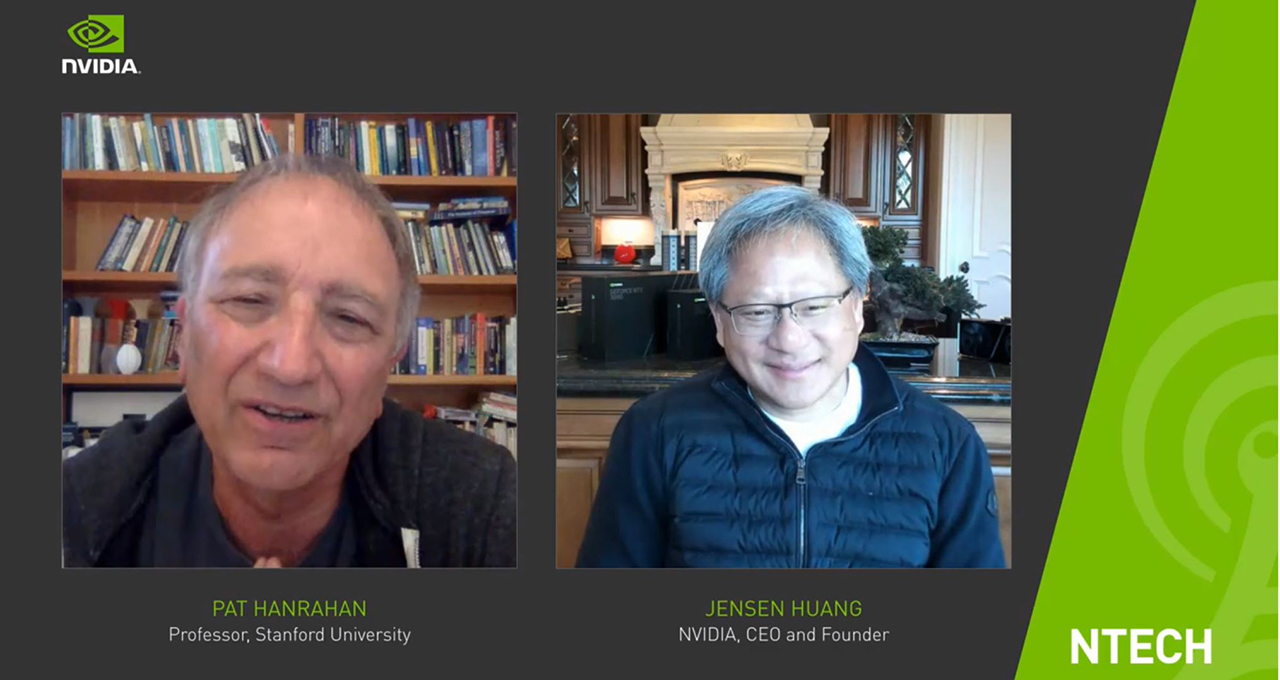You may have never heard of Pat Hanrahan, but you have almost certainly seen his work.
His list of credits includes three Academy Awards, and his work on Pixar’s RenderMan rendering technology enabled Hollywood megahits Toy Story, Finding Nemo, Cars and Jurassic Park.
Hanrahan also founded Tableau Software — snatched up by Salesforce last year for nearly $16 billion — and has mentored countless technology companies as a Stanford professor.
Hanrahan is the most recent winner of the Turing Award, along with his longtime friend and collaborator Ed Catmull, a former president at Pixar and Disney Animation Studios. The award — a Nobel Prize, of sorts, in computer science — was for their work in 3D computer graphics and computer-generated imagery.
He spoke Thursday at NTECH, NVIDIA’s annual internal engineering conference. The digital event was followed by a virtual chat between NVIDIA CEO Jensen Huang and Hanrahan, who taught a computer graphics course at NVIDIA’s Silicon Valley campus during its early days.
While the theme of his address was “You Can Be an Innovator,” the main takeaway is that a “curiosity about how things work” is a prerequisite.
Hanrahan said his own curiosity for art and studying how Rembrandt painted flesh tones led to a discovery. Artists of that Baroque period, he said, applied a technique in oil painting with layers, called impasto, for depth of skin tone. This led to his own deeper study of light’s interaction with translucent surfaces.
“Artists, they sort of instinctively figured it out,” he said. “They don’t know about the physics of light transport. Inspired by this whole idea of Rembrandt’s, I came up with a mathematical model.”
Hanrahan said innovative people need to be instinctively curious. He tested that out himself when interviewing job candidates in the early days of Pixar. “I asked everybody that I wanted to hire into the engineering team, ‘How does a toilet work?’ To be honest, most people did not know how their toilet worked,” he said, “and these were engineers.”
At the age of seven 7, he’d already lifted the back cover of the toilet to find out what made it work.
Hanrahan worked with Steve Jobs at Pixar. Jobs’s curiosity and excitement about touch-capacitive sensors — technology that dated back to the 1970s — would eventually lead to the touch interface of the iPhone, he said.
After the talk, Huang joined the video feed from his increasingly familiar kitchen at home and interviewed Hanrahan. The wide-ranging conversation was like a time machine, with questions and reminisces looking back 20 years and discussions peering forward to the next 20.
